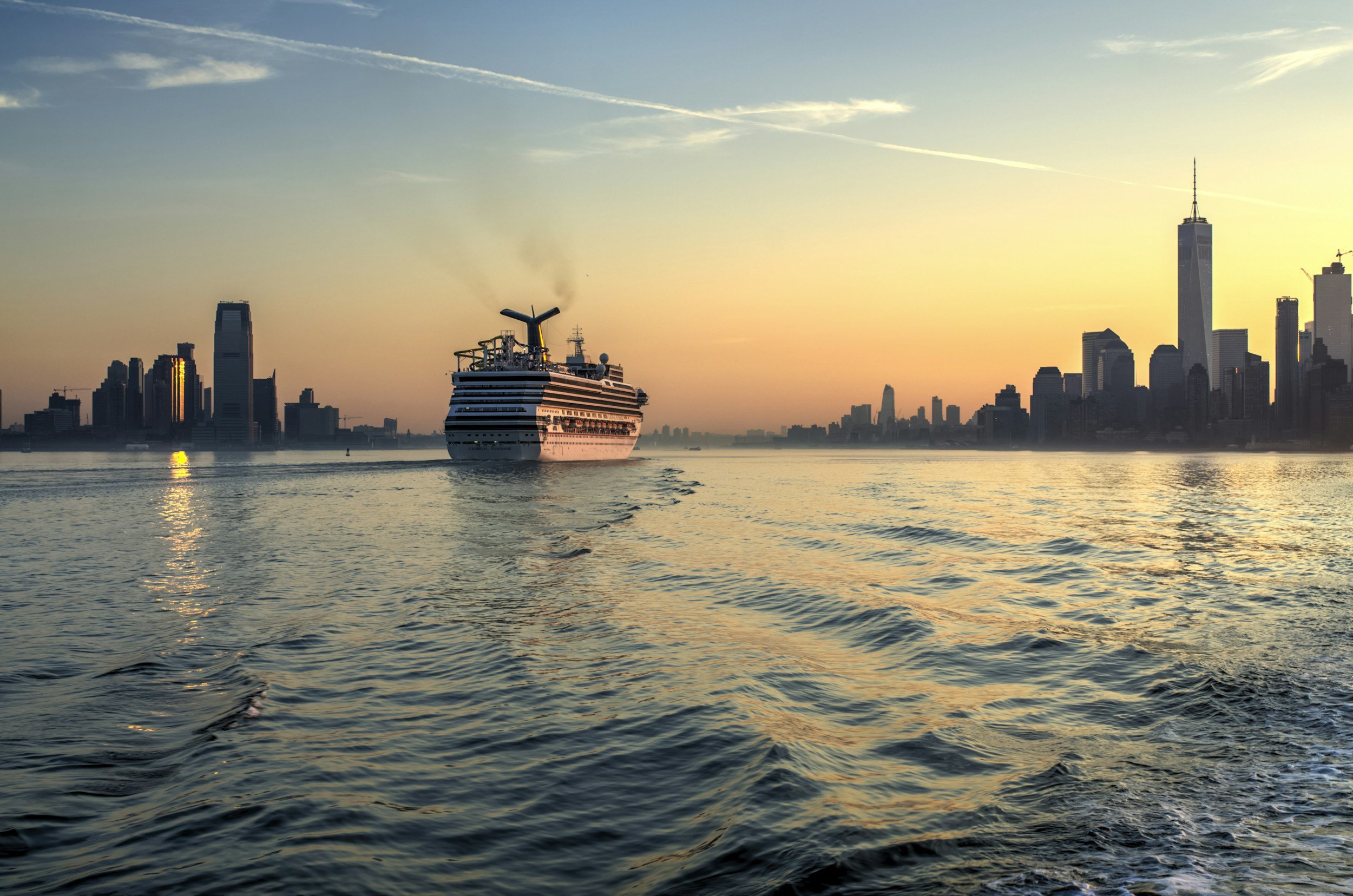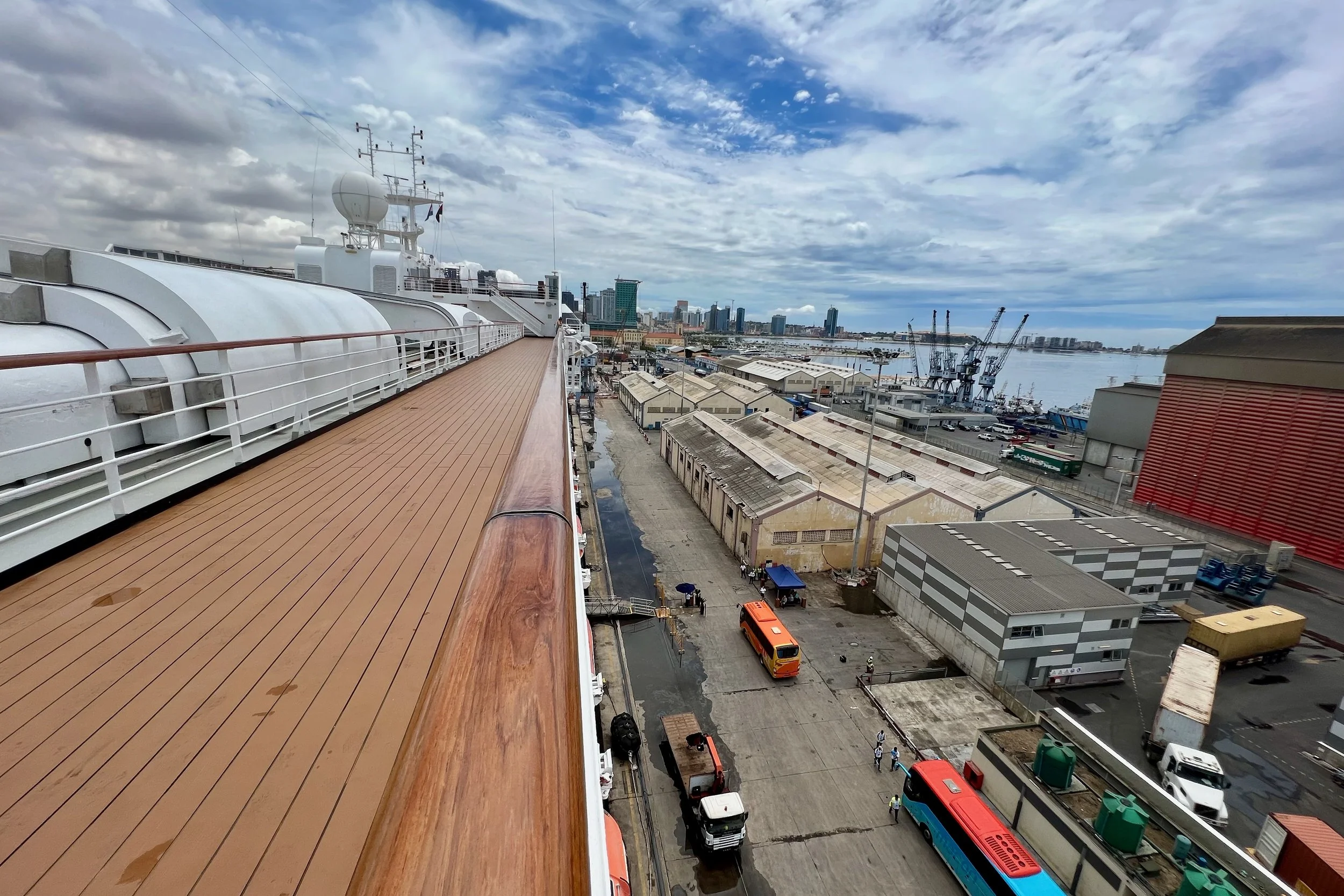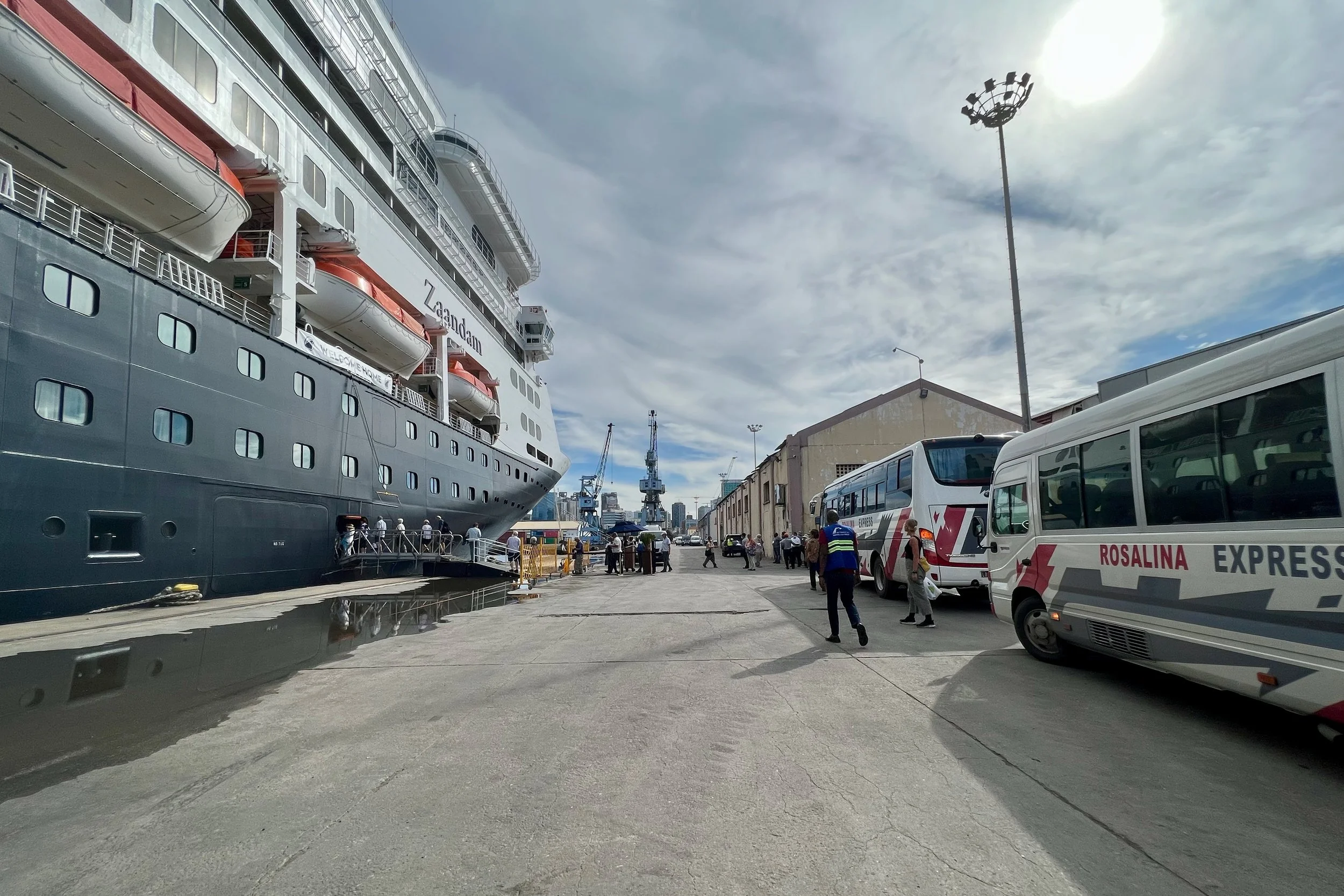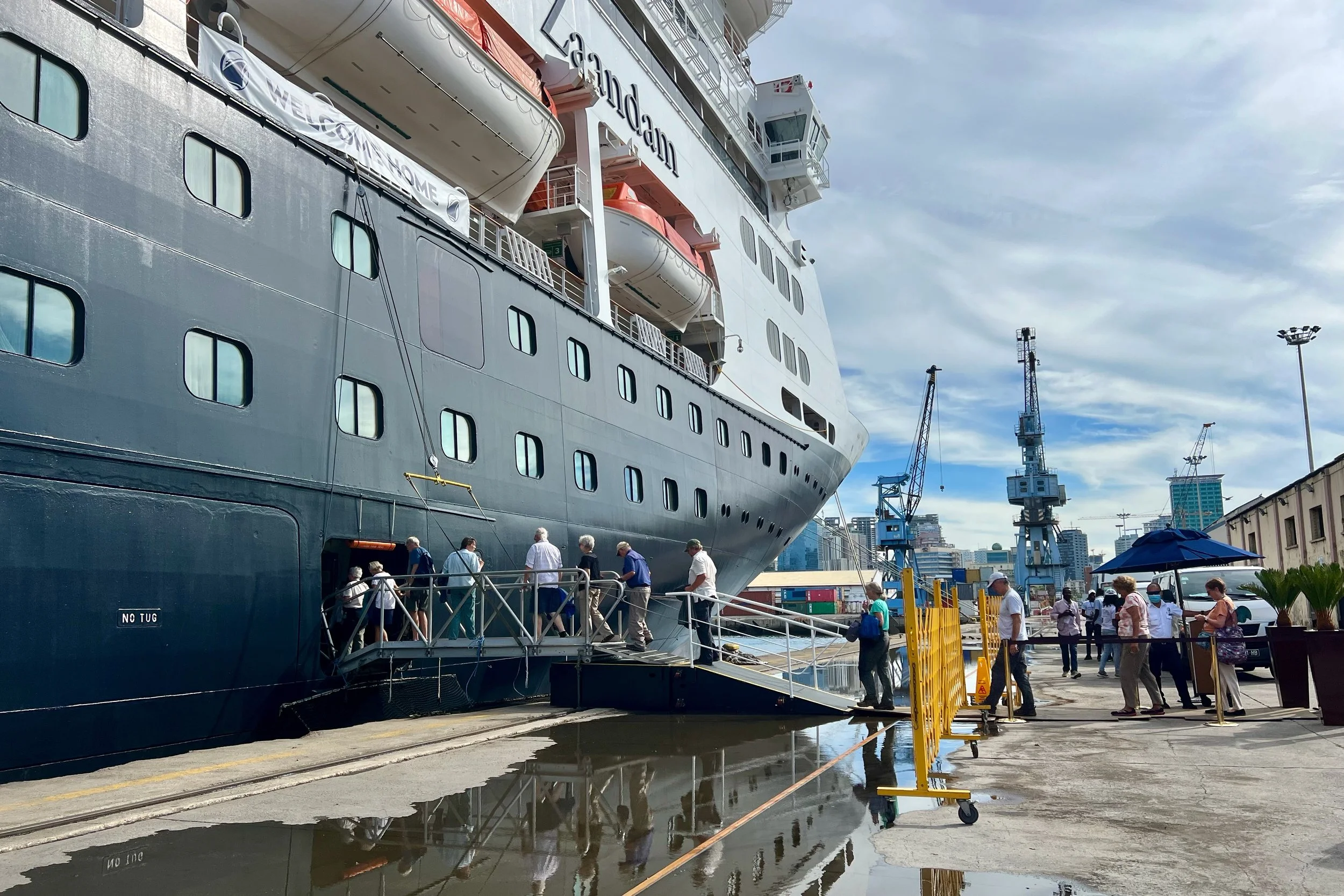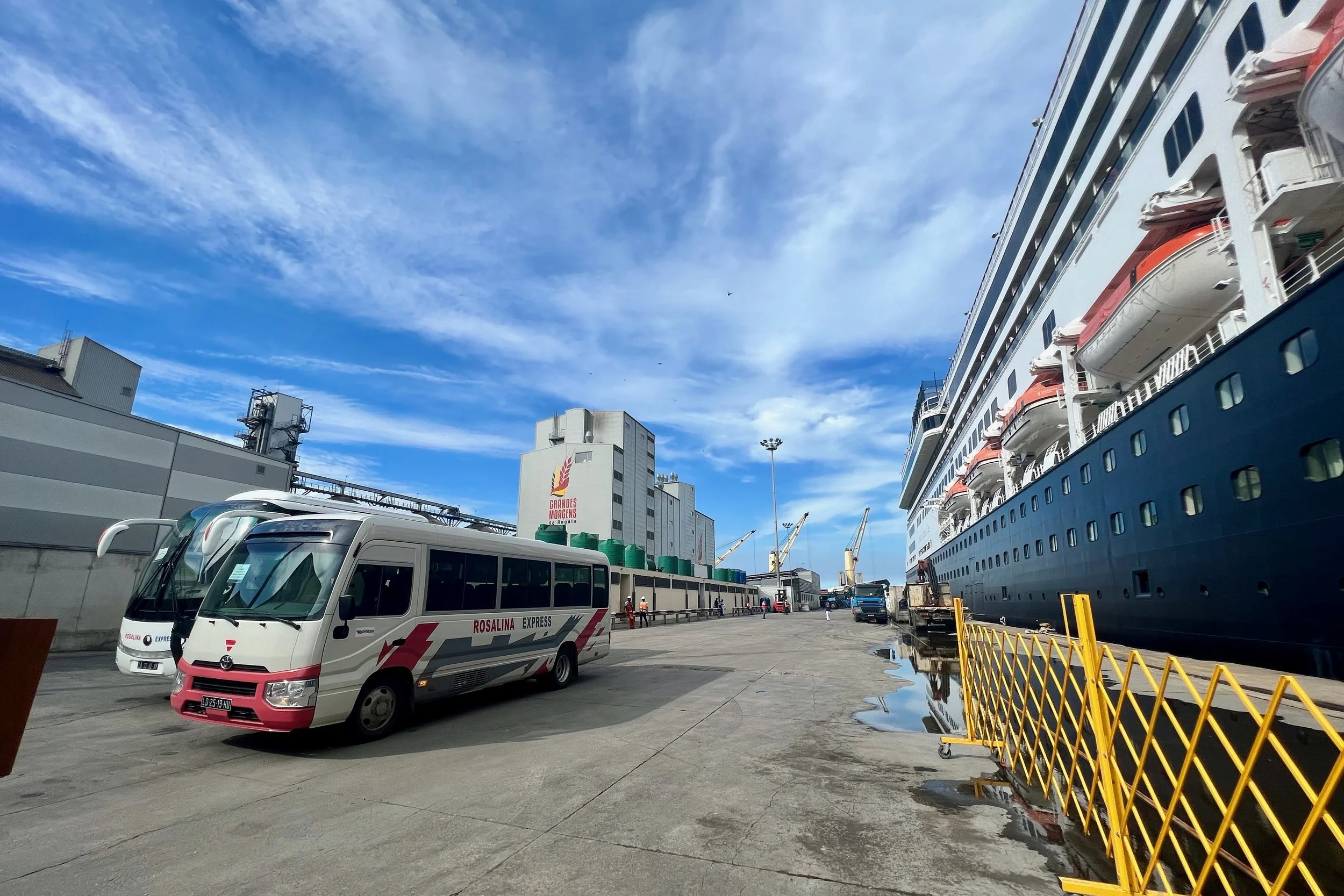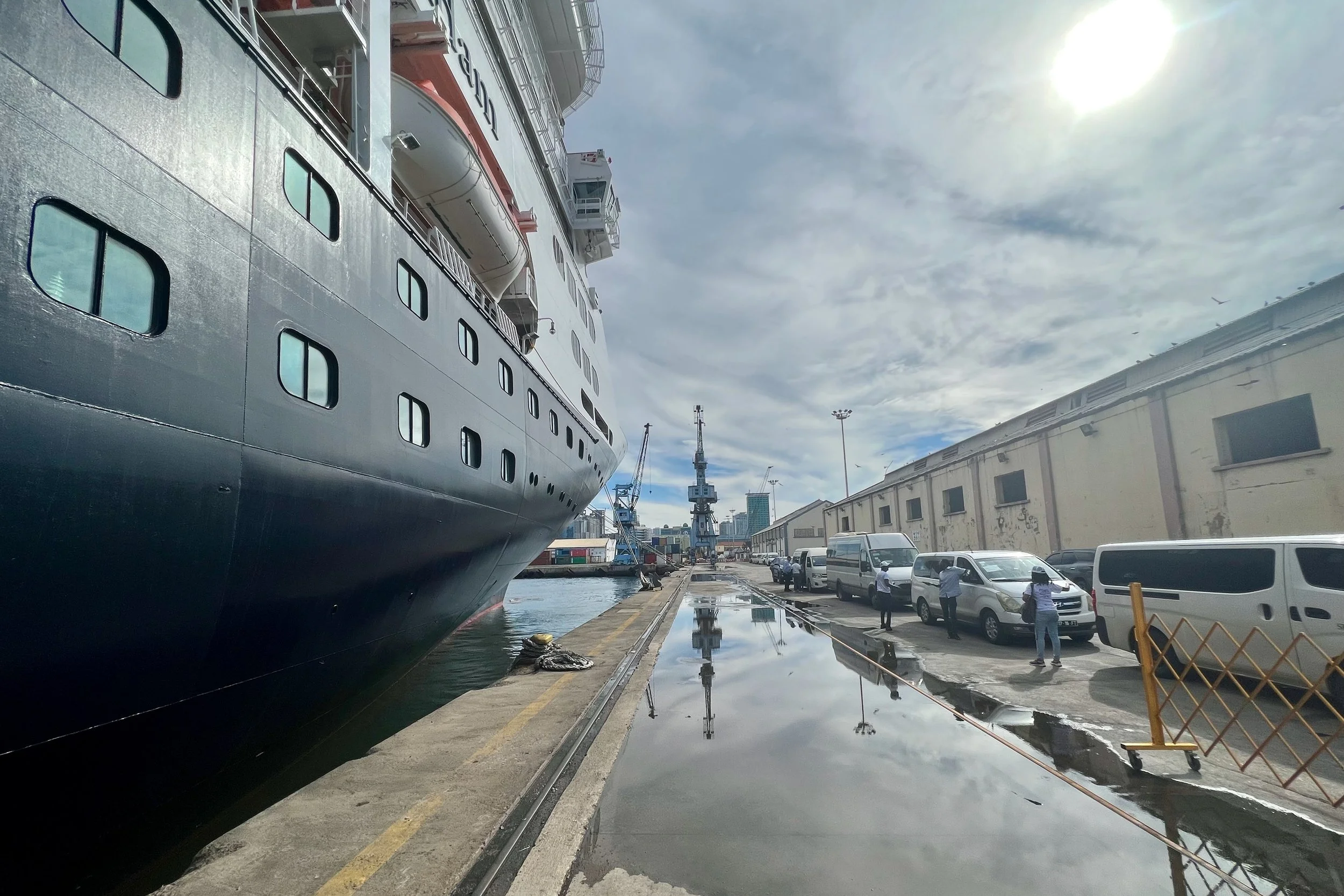LUANDA, ANGOLA
Luanda is the capital of Angola, which lies on the south eastern side of Africa. After centuries of imperialism and decades of civil war, Angola finally gained independence in 2002. Since then, the government and big corporations have been working on building Luanda up into a thriving, economic powerhouse of Africa. When visiting Luanda today, you will see elements of Portuguese colonial rule, remnants of war and hard times, and signs of a new Luanda with modern high rises.
To learn about Angola’s ancient history, start with a visit to the National Museum of Anthropology. There are over 6,000 historical objects ranging from ceremonial masks to intricately carved ivory cups that date back thousands of years.
To see remains of Angola’s colonial history, pay a visit to The Iron Palace—a bright yellow building made purely of iron that was erected in the 1890s. Also consider going to the Church of Our Lady of Remedies and Our Lady of Nazareth Church. For a further journey, head down the coast to the National Slavery Museum.
War has defined so many years of Luanda’s history, and the best place to learn about it is the San Miguel Fort. This site was built in 1576 by the Portuguese, and has been used as a military and administrative hub over the centuries. Today, it holds the Museum of the Armed Forces and you’ll see planes, guns, statues, and photos of military leaders from the past.
If you’d like to experience the nature of Angola, options include a trip to Mussulo Island and the Viewpoint of the Moon.
Other points of interest to consider seeing are the Agosthinho Neto Masusaoleum, the burial site of Angola’s first president, the National Bank of Angola, and the beautifully built waterfront promenade.
Luanda is on the mend from its tumultuous past, but it is by no means healed. There are high rates of unemployment and poverty coupled with political corruption—not a good combination for a happy, comfortable society. Crime rates, including assault and armed robbery, are unfortunately high. It’s highly advisable to travel with a group, preferably led by a local, and leave valuables on the ship.
Exercise caution. But also recognize that visiting Angola is a unique travel opportunity and a chance to learn new things and gain perspective.
PORT FAST FACTS
-
DOCKED OR TENDERED?
Docked.
-
TERMINAL BUILDING OR PIER?
No Terminal Building.
-
WIFI AVAILABLE?
No.
-
PUBLIC RESTROOMS ASHORE?
Not at the port.
-
TOURIST INFORMATION?
Not at the port. Small pop up visitor information at the Market Square outside the port gate.
-
MAPS AVAILABLE?
No.
-
TAXIs / PUBLIC TRANSPORT?
Taxis were not allowed to come inside the port gate on most recent visit. Cruise line operated a shuttle service to a small pop-up market in the square outside the port gate.
-
ATMs / MONEY EXCHANGE?
Not inside the port. There are banks across the street from the public square outside the port gate.
PORT AREA PHOTOS
TOP THINGS TO SEE AND DO
-

The Iron Palace
HISTORICAL BUILDING
Description coming soon!
-

San Miguel Fort
HISTORIC SITE
Description coming soon!
-

Agostinho Neto Mausoleum
SITE OF SIGNIFICANCE
Description coming soon!
-

National Slavery Museum
MUSEUM
Description coming soon!
